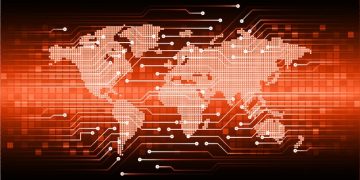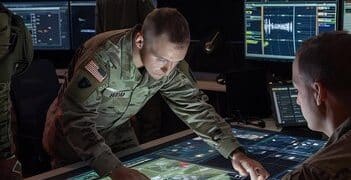Quantum Encryption: Securing The Future of Military Communication
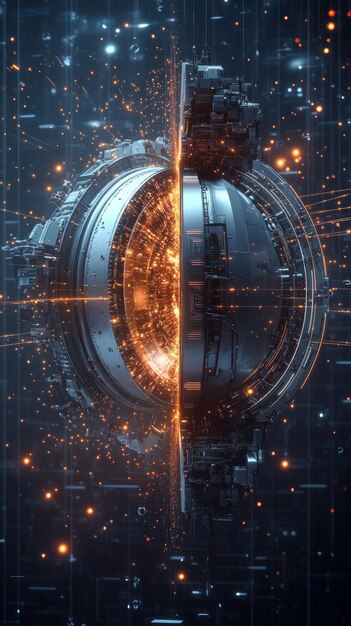
The Future of Military Communication: Exploring the Potential of Quantum Encryption Technologies involves leveraging quantum mechanics to create unbreakable encryption methods, ensuring secure military communications against evolving cyber threats.
In an era defined by sophisticated cyber warfare and relentless espionage, the security of military communications is paramount. The stakes are incredibly high; compromised data can lead to devastating consequences on everything from troop movements to international relations. In this context, understanding the future of military communication: exploring the potential of quantum encryption technologies becomes not just relevant, but essential.
Imagine a world where sensitive military information is impervious to even the most advanced hacking attempts. This may sound ambitious, but it is precisely the promise held by the future of military communication: exploring the potential of quantum encryption technologies. This article delves into quantum encryption, evaluating its potential to protect military communications from current and future threats.
Understanding the Basics of Quantum Encryption
Quantum encryption, also known as quantum key distribution (QKD), harnesses the principles of quantum mechanics to secure communication channels. Unlike classical encryption methods, which rely on computational complexity, quantum encryption leverages the fundamental laws of physics to ensure that any attempt to intercept or eavesdrop on a communication will inevitably alter it, thereby alerting the sender and receiver to the presence of an intruder. This inherent security makes the future of military communication: exploring the potential of quantum encryption technologies an exciting frontier.
Key Principles of Quantum Mechanics
- Superposition: Quantum bits, or qubits, can exist in multiple states simultaneously, unlike classical bits that are either 0 or 1.
- Entanglement: Entangled qubits are linked in such a way that the state of one instantly influences the state of the other, regardless of the distance separating them.
- Uncertainty: The act of measuring a quantum state inevitably disturbs it, making eavesdropping detectable.
How Quantum Key Distribution Works
Quantum Key Distribution (QKD) uses these principles to create a secret key shared only between the sender and receiver. The process typically involves:
First, a sender encodes information onto photons (particles of light) using quantum properties. Then, these photons are transmitted through a quantum channel. Next, the receiver measures the photons with randomly chosen filters or polarizers. After this, the sender and receiver compare a portion of their measurements over a public channel to identify any discrepancies caused by eavesdropping. Finally, they discard the compromised measurements and use the remaining, secure measurements to create an encryption key.
Quantum encryption presents a paradigm shift in secure communications, offering a level of security previously unattainable through classical methods. As cyber threats continue to evolve, the future of military communication: exploring the potential of quantum encryption technologies might be the answer to current security issues.
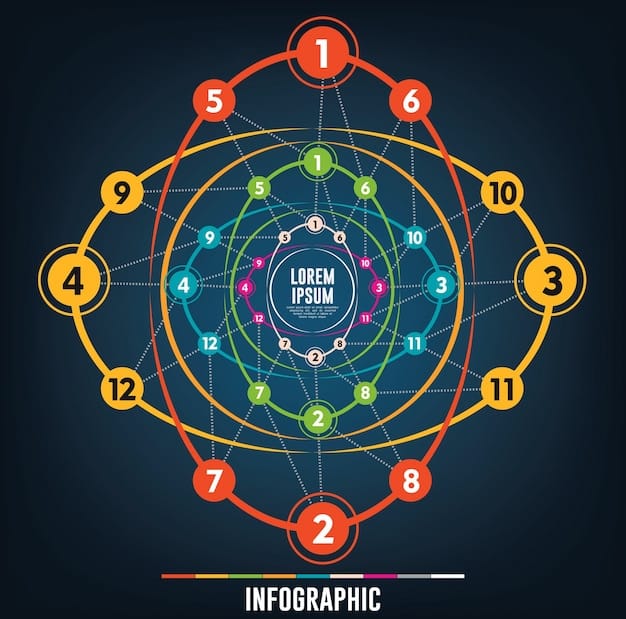
The Limitations of Classical Encryption in Modern Warfare
Classical encryption methods, such as RSA and AES, form the backbone of modern digital security. However, these methods have inherent vulnerabilities, especially in the face of rapid advancements in computing power and sophisticated cyber-attacks. Understanding these limitations highlights the necessity of pursuing the future of military communication: exploring the potential of quantum encryption technologies.
These encryption methods rely on the computational difficulty of certain mathematical problems. As computing power increases due to advances in technology, the time required to break these encryption algorithms decreases. This becomes a serious concern for military strategies and confidential data.
Vulnerabilities of Classical Encryption Methods
- Brute-Force Attacks: Attackers can try every possible key until they find the correct one.
- Side-Channel Attacks: Exploiting weaknesses in the implementation of encryption algorithms.
- Algorithmic Weaknesses: Discovering mathematical flaws in the algorithms themselves.
The advent of quantum computing poses a significant threat to classical encryption. Quantum computers can solve mathematical problems that are intractable for classical computers, potentially rendering many of today’s encryption methods obsolete. Shor’s algorithm, for example, can efficiently factor large numbers, which is the basis for RSA encryption.
Classical encryption methods are susceptible to interception. In transit, encrypted data may be intercepted and stored. Future decryption is possible, when computing power advances or new vulnerabilities are discovered. The future of military communication: exploring the potential of quantum encryption technologies is becoming more important than ever because it promises a secure communication.
Exploring Quantum Encryption Technologies for Military Applications
The future of military communication: exploring the potential of quantum encryption technologies is vast. The unique properties of quantum mechanics offer unparalleled security for military applications, promising to revolutionize how sensitive information is transmitted and stored.
Quantum Key Distribution (QKD)
QKD is one of the most promising applications of quantum encryption. It allows two parties to establish a shared secret key that can be used for encrypting and decrypting messages. Because any attempt to intercept the key will inevitably alter its quantum state, making eavesdropping detectable, QKD offers a level of security unattainable with classical methods.
Quantum key distribution has already been explored for point-to-point communication using optical fibers or free space. Satellites can enable long-distance quantum communication. Despite current limitations impacting its range, QKD remains a potential game-changer.
Quantum Random Number Generators (QRNGs)
Classical random number generators rely on algorithms that can be predictable to some degree. A QRNG harnesses quantum phenomena to generate truly random numbers, essential for creating strong encryption keys and thwarting sophisticated cyber-attacks.
Quantum encryption has many applications, from protecting sensitive data transmissions to securing military databases. It can also enhance the security of military networks, preventing unauthorized access and data breaches. As cyber threats continue to evolve, quantum encryption could be a cornerstone of military defense strategies.
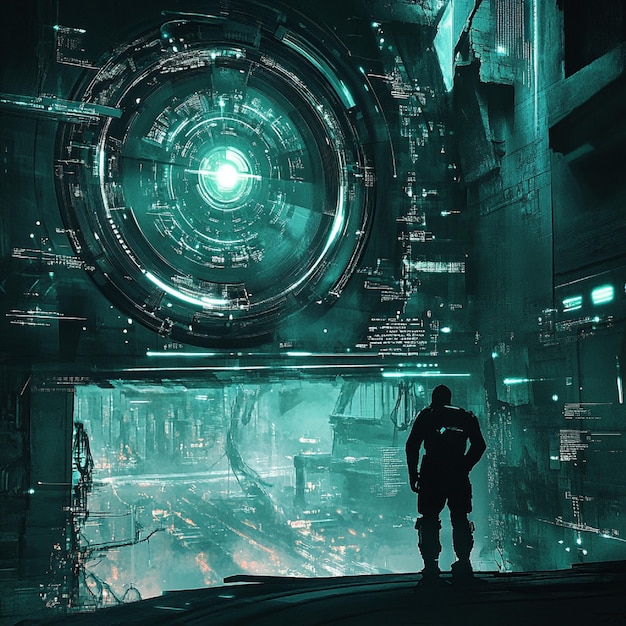
Challenges and Considerations for Implementation
Despite its considerable potential, the implementation of quantum encryption technologies is not without its challenges. Addressing these challenges is crucial to realizing the future of military communication: exploring the potential of quantum encryption technologies. Practical applications require more work.
Cost and Infrastructure
The cost of implementing quantum encryption systems can be substantial. Quantum encryption requires specialized equipment, including single-photon sources and detectors, which can be expensive to manufacture and maintain. A QKD network will involve substantial costs for upgrades and other improvements. The need for new infrastructure will slow real-world adoption and integration; although the security advantages are valuable, the financial commitment may prove challenging.
Range and Scalability
The range of quantum communication is limited by signal loss in transmission mediums such as optical fibers. Over long distances, the signal degrades, making it difficult to maintain a secure quantum channel. Quantum repeaters are being developed to extend the range of quantum communication, but they are still in the early stages of development. Scalability is another concern, as expanding a quantum network to accommodate more users and locations can be technically challenging.
- Environmental Sensitivity:
Quantum systems are highly sensitive to environmental factors such as temperature, vibration, and electromagnetic interference. These factors can disrupt the delicate quantum states used for encryption, leading to errors and security breaches. Protecting quantum systems from environmental noise requires specialized shielding and isolation techniques, adding to the complexity and cost of implementation. Military applications, often occurring in harsh and unpredictable environments, pose an additional challenge to the stability and reliability of quantum encryption systems.
While challenges exist, overcoming them can safeguard military communications against current and future threats. By addressing issues such as cost, scalability, and integration, governments and security agencies can pave the way for practical implementation of quantum encryption. This could provide a more cyber-resilient framework for strategic military operations.
Future Trends and Developments in Quantum Encryption
The field of quantum encryption is rapidly evolving, with ongoing research and development efforts focused on overcoming current limitations and expanding its capabilities. Keeping pace with these advancements is essential for grasping the future of military communication: exploring the potential of quantum encryption technologies. Further innovation may unlock military potential.
Developments in Quantum Key Distribution
- Quantum Repeaters: These devices will amplify and regenerate quantum signals, extending the range of quantum communication networks.
- Satellite-Based QKD: Satellites can enable long-distance quantum communication by relaying quantum signals between ground stations.
- Integrated Quantum Photonics: Miniaturizing quantum components onto photonic chips will reduce the cost and size of quantum encryption systems.
Hybrid Approaches
Hybrid approaches combine quantum encryption with classical encryption methods to enhance security. For example, QKD can be used to generate keys for classical encryption algorithms, providing an additional layer of protection. Quantum encryption can also be integrated with other security technologies, such as blockchain and artificial intelligence, to create a more robust defense against cyber-attacks.
Artificial intelligence can play a crucial role in managing and optimizing quantum encryption systems. AI algorithms can be used to monitor quantum channels, detect anomalies, and adapt encryption protocols in response to changing threat landscapes. AI can also automate tasks such as key distribution and management, reducing the burden on human operators.
The future of military communication: exploring the potential of quantum encryption technologies appears bright. Ongoing research continues to unlock its potential. The integration of quantum encryption with AI will deliver even more powerful security techniques in the years to come.
| Key Aspect | Brief Description |
|---|---|
| 🛡️ Quantum Encryption | Uses quantum mechanics principles for unbreakable key distribution. |
| 💻 Classical Encryption | Relies on computational complexity, vulnerable to advanced computing. |
| 🛰️ Satellite QKD | Enables long-distance quantum communication via satellite relay. |
| 🤖 AI & Quantum | AI enhances quantum encryption by monitoring channels and adapting protocols. |
Frequently Asked Questions
Quantum encryption uses the laws of quantum mechanics to ensure security. Any attempt to intercept quantum communication alters the data, alerting the sender and receiver and preventing eavesdropping.
QKD is a method of using quantum mechanics to create a secret key between two parties. This key is then used to encrypt and decrypt messages, ensuring secure communication.
By providing unparalleled security and preventing unauthorized access, quantum encryption strengthens the security of military communications, networks, and databases. This enhances the resilience of strategic military operations.
Limitations include high implementation costs, limited range due to signal degradation, scalability challenges, and sensitivity to environmental factors such as temperature and vibration.
Future developments include quantum repeaters to extend communication range, satellite-based QKD for longer distances, miniaturization of quantum components, and integration with AI for enhanced management and threat detection.
Conclusion
The future of military communication: exploring the potential of quantum encryption technologies brings forth a paradigm shift in securing sensitive information. By leveraging quantum mechanics, unparalleled security for military applications can be achieved.
Despite existing challenges and limitations, quantum encryption offers potential to protect military communications from evolving cyber threats, revolutionizing how strategic information is transmitted and stored. Ongoing research and the integration with advanced technologies, like AI, promise an even more secure future.


